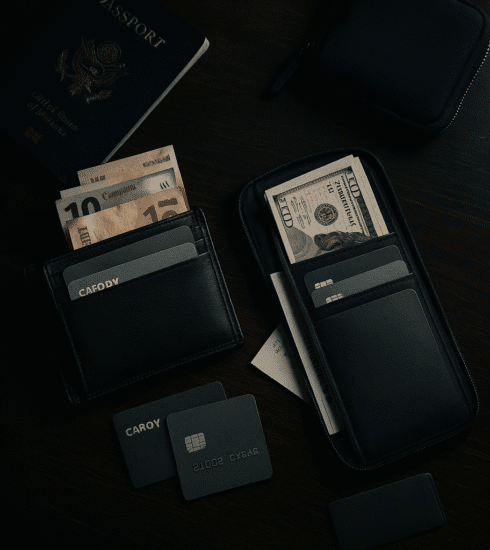Private Browsing Tips That Actually Work
Private browsing modes are a standard feature in every modern web browser, yet their actual function is widely misunderstood. Many users operate under the false impression that these modes make them anonymous online, which is a dangerous misconception. In reality, these tools provide a very specific and limited form of privacy that is useful for discrete scenarios. True private browsing requires a combination of correct browser settings, informed habits, and an understanding of what information you are actually protecting. This guide will clarify what private browsing can and cannot do for you. We will focus on practical, lawful
Your internet service provider and the websites you visit can still see your activity in a private window. This mode only protects your local machine from other users, not you from the outside world.
Understanding the Local Privacy Boundary
The primary function of private browsing is to create a temporary session that leaves no trace on your local device. When you close the private window, the browser deletes cookies, your browsing history, and search history from that session. This is useful for preventing someone else who uses your computer from seeing what you were doing. It is a tool for local privacy, not for anonymity on the internet. Your activity is still completely visible to your network administrator, your internet service provider, and the websites you visit.
This local boundary is valuable in specific situations. You might use it to log into a secondary email account on a shared computer without saving the credentials. It can prevent a shopping website from tracking your search history to manipulate prices. It is also useful for checking how a website appears to a first time visitor, as it bypasses your stored cookies and cached data. Understanding this narrow scope is the first step toward using the tool effectively instead of relying on a false sense of security.
Combining Private Mode with a VPN
To extend privacy beyond your local machine, you must add layers of protection. A reputable Virtual Private Network is the most effective next step for the average user. A VPN encrypts the traffic between your device and the VPN server, shielding your activity from your internet service provider. It also masks your real IP address from the websites you visit, making your location appear to be that of the VPN server. This combination significantly increases your privacy.
It is critical to understand that a VPN provider can see your traffic, so choosing a trustworthy service with a clear no logs policy is paramount. Using private browsing mode with a VPN ensures that your local activity is not stored while your internet traffic is encrypted in transit. This two layer approach protects you from local snooping and from network level observation. It is a powerful and legal combination for enhancing your general online privacy.
Do not log into any personal accounts while using private browsing for sensitive research. A logged in account directly correlates all your anonymous activity back to your real identity, nullifying any privacy benefits.
Managing Cookies and Site Data Proactively
Cookies are a major vector for tracking your online behavior across different websites. While private browsing deletes them at the end of your session, you can take more proactive measures in your browser’s main settings. Configure your regular browser to automatically delete cookies when you close it, or to block third party cookies entirely. This prevents the slow buildup of a persistent profile linked to your browser fingerprint over time.
You should regularly review and clear stored site data, including cached images and files. This data can be used to identify you even if your cookies are deleted. Many browsers offer enhanced tracking protection features that can be set to strict mode. These features actively block known trackers from social media companies and data aggregators. Managing these elements reduces your digital footprint and makes private browsing sessions even cleaner when you need them.
The Critical Role of Search Engine Selection
Your choice of search engine has a profound impact on your privacy, regardless of your browsing mode. Mainstream search engines are designed to record your queries, link them to your identity, and build a advertising profile. Opt for privacy focused search engines that do not track your searches or store your personal information. These providers generate revenue through alternative means, such as paid tiers or contextual advertising, rather than selling user data.
Using a private browsing window with a privacy centric search engine is a synergistic practice. It ensures that your search queries are not saved to your device and are not being logged and profiled by the search company itself. This is one of the most effective single changes you can make to reduce corporate surveillance of your online activity. It protects your intellectual curiosity from being packaged and sold to the highest bidder.
Disciplined Browser Tab Management
Operational security relies on discipline, and this applies to how you manage your browsing sessions. A fundamental rule is to never mix sensitive browsing with personal browsing. If you are using private mode to research a sensitive topic, do not open another tab to check your personal social media or email. The moment you log into a personal account, you have directly linked all your anonymous activity to your identity.
Treat each private browsing session as a single mission with a defined objective. Once that objective is complete, close the entire window. Do not leave private windows open for extended periods or use them for general browsing. This disciplined approach minimizes the risk of accidentally contaminating your private session with a login or other identifying action. It is a simple habit that dramatically increases the effectiveness of the tool.
Verifying Your Privacy Settings Regularly
Browser updates can sometimes reset your preferences or introduce new features that affect privacy. Make it a routine to check your privacy and security settings every few months. Ensure that your preferences for cookie blocking, tracking protection, and data deletion are still configured correctly. This is also a good time to review the extensions you have installed, as they can have extensive permissions to read your data.
Several websites exist that allow you to test your browser’s privacy settings. These sites will show you what information your browser is revealing to every site you visit, such as your IP address, screen resolution, and installed fonts. Running these tests in both your standard and private browsing modes can be enlightening. It helps you understand exactly what you are protecting and what you are still exposing, allowing for more informed adjustments.
Private browsing is a useful tool, but it is not a cloak of invisibility. Its power is unlocked only when you understand its limitations and combine it with other prudent practices. The goal is not to become a ghost online, but to exercise greater control over your personal information. By managing your cookies, choosing the right tools, and maintaining disciplined browsing habits, you can significantly reduce your digital footprint. These actions help reclaim a measure of privacy in an increasingly transparent digital world.
Start by auditing your current browser settings and making one change, such as switching your default search engine. Build from there, integrating these tips into your routine until they become second nature. Your privacy is worth the minimal effort required.





